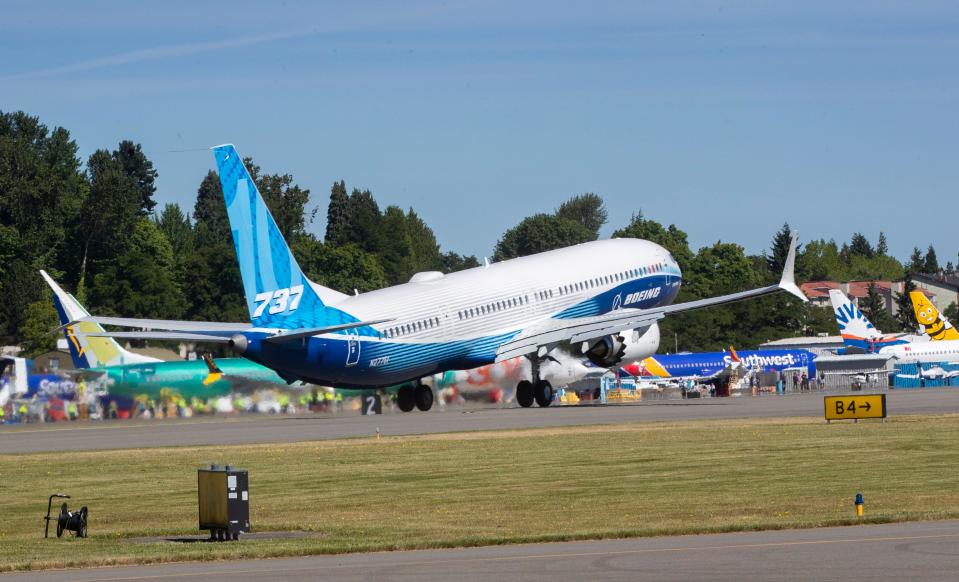What you need to know about the Boeing 737 Max 10, its biggest 737 ever
Last week, Boeing’s biggest 737 plane yet flew for the first time, for 2½ hours in Washington State. While the 737 Max 10 won’t be in service until 2023, airlines eagerly await its arrival. United Airlines, for example, is said to have 100 on order.
It appeals to airlines because it's a flexible, efficient airplane that can be used for both short, crowded flights such as Dallas to Charlotte or Chicago to LAX as well as long-haul routes like Newark to Shannon, Ireland.
It’s easy to forget that when the 737 began service in 1967, it was a small, two-engine jet, measuring 93 feet long that would be considered a regional jet today. Fast forward to this decade, which has seen it evolve into a much longer plane. The Max 8 is nearly 130 feet long and the Max 10 will be 143 feet. 8 inches long.
The new Max 10 has the characteristic of other long-fuselage such as the 757-300 and rival Airbus’ old A340-600 (one of the longest aircraft in history) and A321.
Why the trend towards skinnier planes?
Narrowing a plane’s fuselage length is a way to make it more efficient. This means more passengers and cargo can be accommodated with a small increase in fuel burn. Modern jets are much more efficient, both in terms of the amount of fuel they burn and with their capacity.
The narrower fuselage trend has a minimal impact on flight crews. Wide-body flight decks tend to be a bit more comfortable because they are larger, but the flying characteristics of wide and narrow-body jets are similar. However, at most airlines, the pay is better for pilots who fly larger planes.
Does the 737 Max 10 have any specific safety concerns?

But with greater efficiency come different flying dynamics. The Max 10’s extended length will require pilots to be very mindful of the tail during takeoff and landing. Failing to carefully monitor the pitch attitude can result in the tail touching or scraping the runway, known as a tail strike.
While a tail strike is not likely to kill or injure the people aboard, it can damage the plane's aft pressure bulkhead (a seal at the rear of the aircraft, which helps it maintain pressure), which is a very serious – and expensive – repair.
The good news is that, in a way, the pandemic was good for the 737 Max, both in terms of public relations and aircraft safety. The onset of COVID-19 made many people forget their concerns – or at least have more perspective – about flying on the plane and the grounding of its sibling, the 737 Max 8 after two deadly crashes in Indonesia and Ethiopia.
Investigators found that a contributing factor in both crashes was the 737 Max's MCAS (Maneuvering Characteristics Augmentation System), anti-stall software intended to make the Max fly more like a classic 737 despite its larger engines and their repositioned placement on the wings.
The 737 Max was recertified by the FAA in mid-November and returned to service in late December, as leisure travel was rebounding.
And after the 20-month-long grounding of the 737 Max 8, you can be assured the newest plane will be carefully tested and checked before it enters service in 2023. (It was originally scheduled to debut in 2020.)
So if you are wondering whether the 737 Max is safe, the answer is yes. Following the aircraft’s grounding and extensive recertification process, the 737 Max now safely flies thousands of people every day.
This article originally appeared on USA TODAY: Boeing 737 Max: What to know about the Max 10, the biggest one yet
